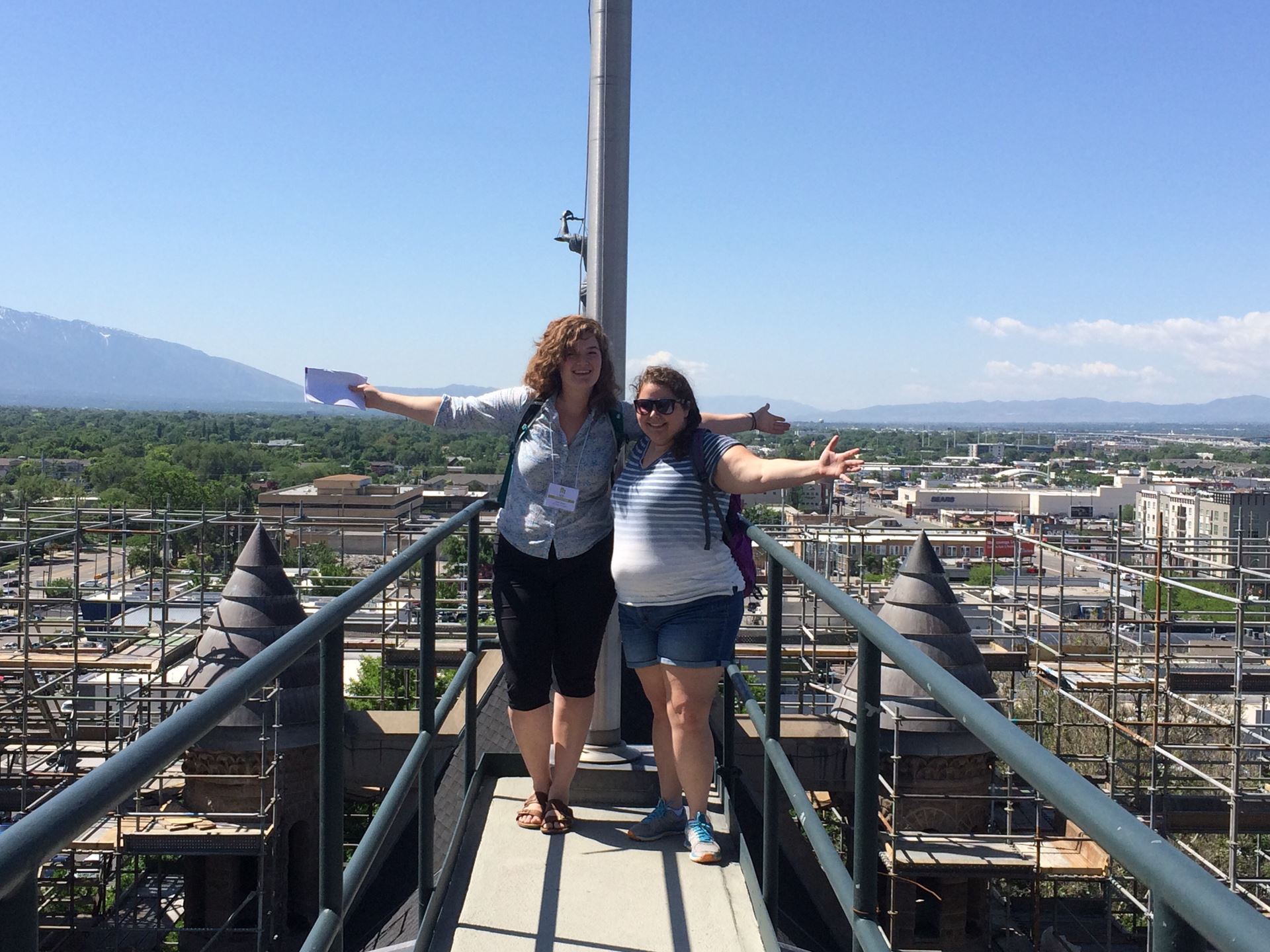 Emily Royer:
Emily Royer:
The Historic Preservation department from Ball State University attended the Vernacular Architecture conference for the first time this year. Three students from our program attended, introducing a new type of conference and a new strain of dialogue to enrich the professional nature of the program. Over the course of the event, Kelyn, Clint, and myself discussed the differences between VAF and other conferences we’d attended, ultimately concluding that VAF felt like a reunion of friends who shared a favorite passion rather than simply a networking event or educational conference.
The overall energy of Two Utahs helped me to quickly meet and connect with others, whether they were fellow first-time attendees or VAF veterans. I am amazed at the variety of research and interests represented by VAF members, which lent perspective to my personal experience of the tours and made the entire trip a ton of fun.
I began my week with a tour of the Sanpete Valley. Not knowing what to expect except for the “busload of architectural historians looking at great buildings” I had been promised, I looked forward to seeing how Mormonism shaped the daily life of the early settlers. The first leg of our tour covered about fifteen stops, most of which were small homes in the area. I barely visited half of them, finding myself instead in long conversations with homeowners or their neighbors who were eager to talk about their town. By the end of the day layers of building, story, and growth composed a dynamic picture of life past and present in the small towns.
The next day of tours was spent in the “second Utah”. A morning tour of the gentile city and an afternoon tour of the quickly re-developing streetcar suburbs showed a different Salt Lake City of change and cooperation.
The final day of paper presentations put it all into perspective. The scholarship shared help me to reflect on the nature of my own interests and work, and conversations about the previous day’s tours helped me to make sense of the things I’d seen. Evenings at bars or dinners with new friends led to similar discussions.
Kelyn Alexander:
Overall, my first VAF showed me a group of people dedicated to listening and learning and ultimately reading and acknowledging the unique history of a place, and consequently a new way to learn from and with others. I look forward to incorporating more of this kind of work into my program, and can’t wait for the next gathering in Alexandria!
I am extremely grateful I was part of the Ball State group selected for an Ambassador Award to the VAF Conference this year in Salt Lake City. As my first introduction to vernacular architecture, I couldn’t have planned a better learning experience. I found the organization of the conference to truly augment my understanding of how the built environment can influence social history and how the opposite also occurs.
Salt Lake has such a unique blend of secular and religious influences, and I had the chance to see and experience how they interact. For the two days of tours, I chose to attend the Park City tour and the tours on re-urbanization in Salt Lake. I explored old mining shacks, million dollar resort homes, and the Olympic Park. I also learned about the founding, development, and redevelopment of these places.
Additionally, in talking to veteran VAF attendees, their passion and dedication to the field was apparent to me. And that attitude pervaded the entire conference. I enjoyed hearing about fellow students’ and professionals’ work. The presentations they shared on the final day of the conference further showed me the extent to which this field of study can be applied. I will definitely be attending another VAF conference in the future and would recommend anyone interested in history to attend! Looking forward to 2018 and Alexandria!
Clint Kelly:
Being awarded a VAF Ambassador scholarship was a fantastic opportunity. I had never heard of the Vernacular Architecture Forum and was very impressed with the conference. I spent four days learning about Utah architecture, cultural heritage of the area, and meeting new people. I have attended a handful or national and state conferences over the past two years of graduate school. VAF was the only one that focused on architectural history. I will likely attend other VAF conferences.